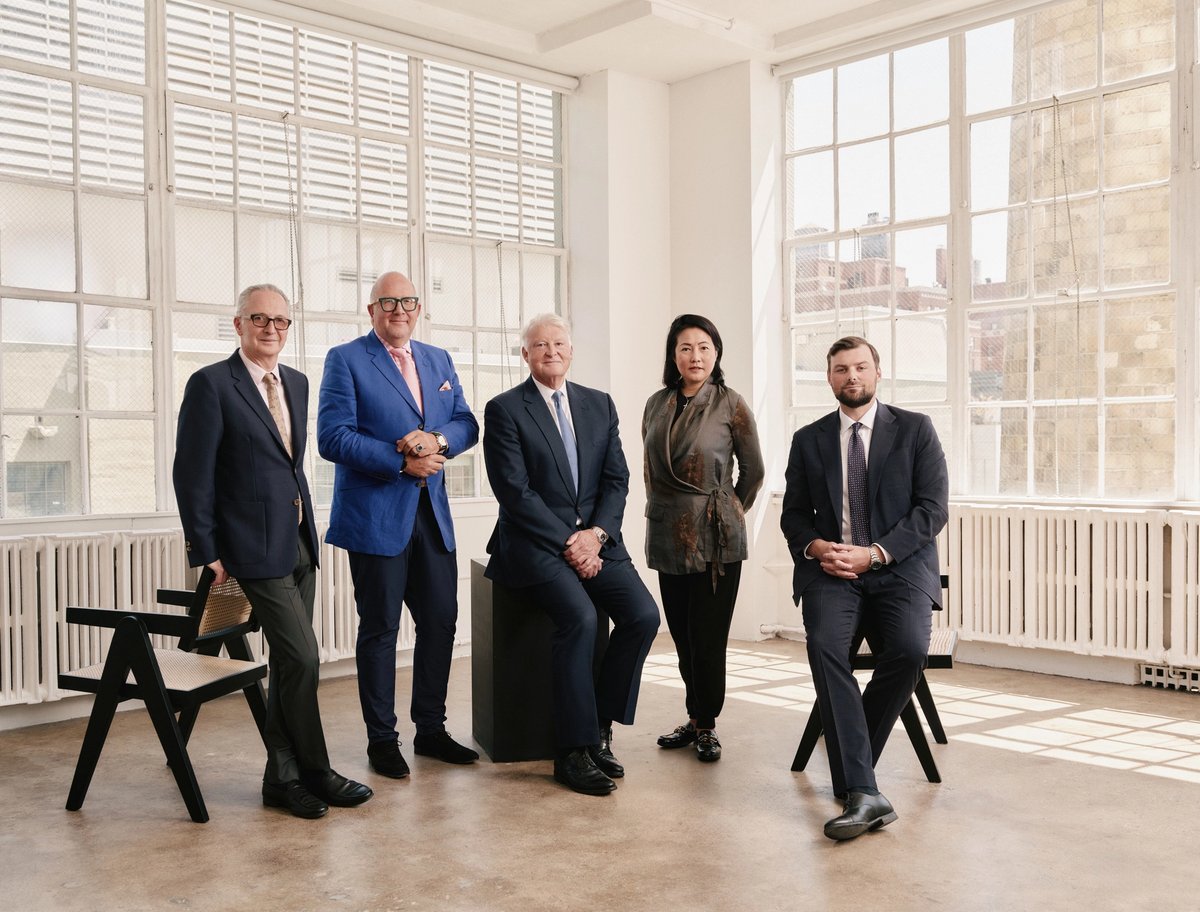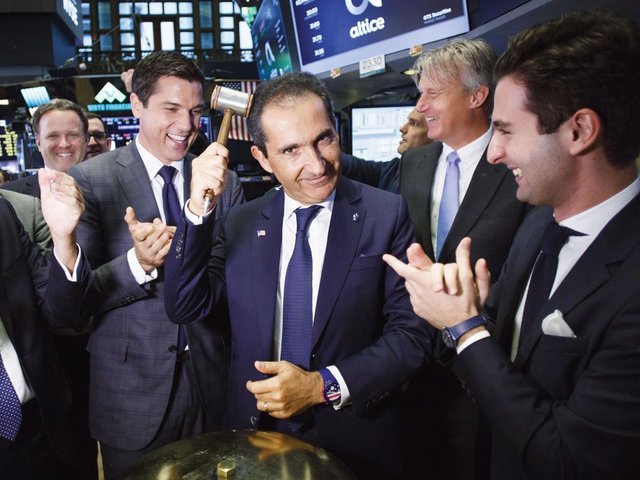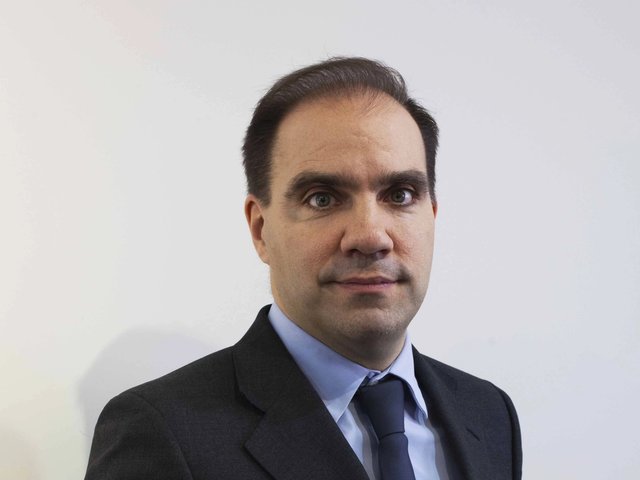Four of the art market’s leading figures have joined forces to establish a new consultancy firm to manage top-level clients and their collections through what they say are unprecedented shifts in the trade.
The new “super group” comprises four people who have been instrumental in some of the art world’s biggest deals over the past 30 years: Ed Dolman, the former executive chairman of Phillips; Brett Gorvy, a co-founder and partner of Lévy Gorvy gallery and former chairman of Post-War and contemporary art at Christie's; and Patti Wong of the Hong Kong-based company Patti Wong & Associates, who was formerly part of Sotheby’s executive team. They are collaborating with Wong’s business partner Phillip Hoffman who runs the London-based advisory, The Fine Art Group. Dolman’s son Alex, who recently launched the advisory firm Dolman Partners with his father, is also joining the group. All members will maintain their existing roles in their own businesses.
As opposed to traditional art advisories, the new consortium—called New Perspectives Art Partners—is planning to work with clients on a case-by-case basis. “We are offering a white glove service, dealing with every aspect of someone’s particular needs,” Gorvy says. That might include buying and selling art—whether at auction, via galleries or privately—estate management and the financing and insuring of a collection. The group’s approach will be whole-of-market, and not limited to their own existing advisories and galleries.
“Each one of us represents not only a particularly area of expertise, but also a very specific geographical placement: Europe, America, the Middle East and Asia,” Gorvy says, noting that their main client base will be family officers, wealth managers and fiduciaries. The group will also represent clients who operate across multiple categories: luxury items, collectibles, design and works of art. Gorvy estimates that between them the new firm has 350 clients operating at the very top of the market, with the capacity to spend $30m on an object.
The idea to form the consortium comes at a time when the art market faces a unique set of challenges. Reiterating comments made by dealers at Art Basel last week, Ed Dolman notes that the trade is undergoing a “paradigm shift”. He adds: “People need to come to terms with that. And if you’re not, you’re living in a different reality.”
Not just another cycle
Dolman, who has more than 40 years’ experience in the trade, including as the former director of the office of Sheikha Al Mayassa bint Hamad bin Khalifa Al-Thani, the chairperson of the Qatar Museums Authority, says he “grew up in a comfortably cyclical market” that was “relatively geographically constrained” to the US and Europe. “There were relatively few clients, but they were very committed clients of a certain age who were collecting classic 19th- and 20th- century art,” Dolman says. “Over the past 20 years, we’ve seen that completely disintegrate in front of our eyes—much to the benefit of the volume of sales. The art market is now truly international, has much younger collectors in it, and is more affected by geopolitical shifts than ever before.” He notes how Chinese buyers have pulled back considerably due to “constraints” on their capacity to buy internationally, which has had a “pretty dramatic impact” on the market and the number of buyers operating, particularly at auction. He also points to the retreat of Russian collectors, who were key to the market at the turn of the century. “[This] has made the market more vulnerable,” Dolman says. “And we’re at a place now where people who want to be a part of the market are asking lots of questions: where and how do I buy? What should I be buying?”
Old models no longer working
Gorvy thinks that traditional platforms including auctions and art fairs are no longer functioning like they used to. “Ultimately, the market has changed, but so have its audiences,” he says. “People are looking at PDFs and don’t necessarily feel the hunger or the need to buy in the way that they used to. Art Basel was a very different kind of art fair than we’ve seen in the past few years—not necessarily unsuccessful, but just a different kind of complexion of people, a different kind of complexion of art being offered.”
The pandemic also significantly altered the way auction houses sell art. “Clients no longer receive catalogues, so people are missing key objects or key moments in the in the calendar,” Gorvy says. “It’s a different world, one that just needs careful and sensitive navigation, both in terms of the material you bring [to market] and the platforms that are really working.” Unlike auction houses, which often operate large teams, Gorvy points out the new consortium can keep operations streamlined and private.
Dolman notes that the digital revolution, which reduced auction houses to relatively small footprints in terms of staff, printing and marketing costs, hasn’t really benefited profit margins. “Profitability is a problem for auction houses. A huge number of extra costs have been loaded into the auction business model without necessarily any significant decreases in their cost base,” he says. “At the same time, auction commissions—mostly in terms of buyers’ premium, but also in terms of vendors’ commission—have never been higher than they are right now.”
Private sales, too, are growing as public auction values fall. “There’s less froth in the auctions, you don't see many pictures doubling or tripling their estimates,” Dolman says. “A lot of that is to do with the way that sales are put together, and the impact of third-party guarantees.”
As for the fee structure of the new consortium, Dolman says their overheads will be low to begin with. “At the moment, we’re trying to keep as light our on feet as possible so that we can be as competitive as we can when it comes to fees and our charging structure to clients,” he says.
Generational shift
One of the main focuses of the new group will be the next generation of collector. “The need for knowledge and expertise is even greater than ever because we are now dealing with a generation that is inheriting collections or having to deal with their parents’ and family collections,” Gorvy says. “The younger generation may not have the same understanding of the complexities of the art market that their parents did.”
The dealer notes that the next generation accesses art in completely different ways than in the past, whether that’s via Instagram or mobile phones. “Visiting a gallery and talking to someone for hours about a work of art is very old school,” Gorvy says. “Everyone has access now in a way that is so easy, but it doesn’t necessarily come with great depth of knowledge.”
Another eye will be on the emerging strength of the Middle East, where Art Basel and Sotheby’s are both investing heavily. Alex Dolman has primarily been working in Saudi Arabia for nearly a decade and has deep relationships in the region, alongside his father.
Looking forward, Dolman says the next few years will be very hard to predict. “If anyone could put their hand on their hearts and tell you where [the market] is going to be in five years’ time, they'd be very brave,” he says. “In the short-term, I think we’ll see a continued flight to late 19th- and 20th-century blue-chip art—the recent interest in Surrealism is a response to that.”
Despite some of the speculation leaving the contemporary art market, Dolman thinks there will still be “an insatiable appetite” for living artists. “I haven’t given up on that at all—it’s such an exciting and vibrant area of the market that speaks to so many new people who are coming in. It’s certainly not going to go away.”






